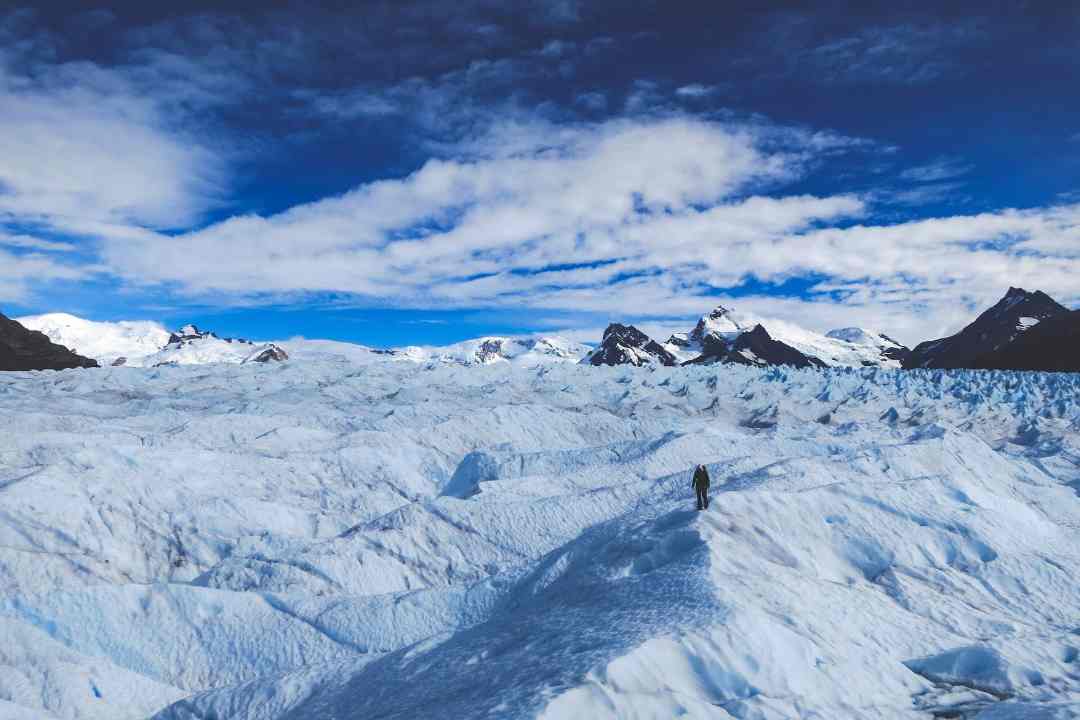Several thousand sensors distributed over a square kilometer near the South Pole are tasked with answering one of the large outstanding questions in physics: does quantum gravity exist? The sensors monitor neutrinos—particles with no electrical charge and almost without mass—arriving at the Earth from outer space. A team from the Niels Bohr Institute (NBI), University of Copenhagen, has contributed to developing the method that exploits neutrino data to reveal if quantum gravity exists.
“If as we believe, quantum gravity does indeed exist, this will contribute to unite the current two worlds in physics. Today, classical physics describes the phenomena in our normal surroundings such as gravity, while the atomic world can only be described using quantum mechanics.
“The unification of quantum theory and gravitation remains one of the most outstanding challenges in fundamental physics. It would be very satisfying if we could contribute to that end,” says Tom Stuttard, Assistant Professor at NBI.
Stuttard is co-author of a article published by the journal Nature Physics. The article presents results from a large study by the NBI team and American colleagues. More than 300,000 neutrinos have been studied.
However, these are not neutrinos of the most interesting type originating from sources in deep space. The neutrinos in this study were created in Earth’s atmosphere, as high-energy particles from space collided with nitrogen or other molecules.
“Looking at neutrinos originating from the Earth’s atmosphere has the practical advantage that they are by far more common than their siblings from outer space. We needed data from many neutrinos to validate our methodology. This has been accomplished now. Thus, we are ready to enter the next phase in which we will study neutrinos from deep space,” says Stuttard.
Traveling undisturbed through Earth
The IceCube Neutrino Observatory is situated next to the Amundsen-Scott South Pole Station in Antarctica. In contrast to most other astronomy and astrophysics facilities, IceCube works the best for observing space at the opposite side of the Earth, meaning the Northern hemisphere. This is because while the neutrino is perfectly capable of penetrating our planet—and even its hot, dense core—other particles will be stopped, and the signal is thus much cleaner for neutrinos coming from the Northern hemisphere.
The IceCube facility is operated by the University of Wisconsin-Madison, U.S. More than 300 scientists from countries around the world were engaged in the IceCube collaboration. University of Copenhagen is one of more than 50 universities with an IceCube center for neutrino studies.
Since the neutrino has no electrical charge and is nearly massless, it is undisturbed by electromagnetic and strong nuclear forces, allowing it to travel billions of lightyears through the universe in its original state.
The key question is whether the properties of the neutrino are in fact completely unchanged as it travels over large distances or if tiny changes are notable after all.
“If the neutrino undergoes the subtle changes that we suspect, this would be the first strong evidence of quantum gravity,” says Stuttard.
The neutrino comes in three flavors
To understand which changes in neutrino properties the team is looking for, some background information is called for. While we refer to it as a particle, what we observe as a neutrino is really three particles produced together, known in quantum mechanics as superposition.
The neutrino can have three fundamental configurations—flavors as they are termed by the physicists—which are electron, muon, and tau. Which of these configurations we observe changes as the neutrino travels, a truly strange phenomenon known as neutrino oscillations. This quantum behavior is maintained over thousands of kilometers or more, which is referred to as quantum coherence.
“In most experiments, the coherence is soon broken. But this is not believed to be caused by quantum gravity. It is just very difficult to create perfect conditions in a lab. You want perfect vacuum, but somehow a few molecules manage to sneak in etc.
“In contrast, neutrinos are special in that they are simply not affected by matter around them, so we know that if coherence is broken it will not be due to shortcomings in the man-made experimental setup,” Stuttard explains.
Many colleagues were skeptical
Asked whether the results of the study published in Nature Physics were as expected, the researcher replies, “We find ourselves in a rare category of science projects, namely experiments for which no established theoretical framework exists. Thus, we just did not know what to expect. However, we knew that we could search for some of the general properties we might expect a quantum theory of gravity to have.”
“While we did have hopes of seeing changes related to quantum gravity, the fact that we didn’t see them does not exclude at all that they are real. When an atmospheric neutrino is detected at the Antarctic facility, it will typically have traveled through the Earth. Meaning approximately 12,700 km—a very short distance compared to neutrinos originating in the distant universe. Apparently, a much longer distance is needed for quantum gravity to make an impact, if it exists,” says Stuttard, noting that the top goal of the study was to establish the methodology.
“For years, many physicists doubted whether experiments could ever hope to test quantum gravity. Our analysis shows that it is indeed possible, and with future measurements with astrophysical neutrinos, as well as more precise detectors being built in the coming decade, we hope to finally answer this fundamental question.”
Reference: Search for decoherence from quantum gravity with atmospheric neutrinos, Nature Physics (2024). DOI: 10.1038/s41567-024-02436-w
